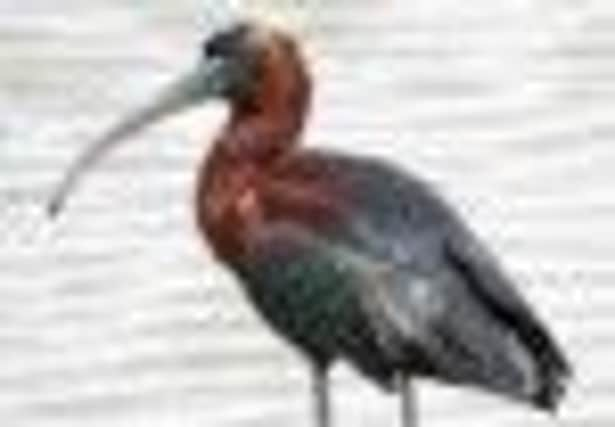RICHARD WILLIAMSON: Anniversary toast to exotic joker


On our wedding anniversary we wondered what to do. Family too far away. Tate exhibitions too. Local garden centre with lunch and bunch and a last look at the brent geese before they go back to Russia?
We could combine all with research for this week’s walk at Warblington, just over the county border into Hampshire for a change.
Advertisement
Hide AdAdvertisement
Hide AdSo we took the road west to those priceless water meadows below the watercress beds.May they never be built on. We admired the ancient female yew at St Thomas a’Becket, then came to a small posse of birdwatchers with serious telescopic gear 100 yards east of the church.
‘Anything about?’ Earlier I had asked that question of a similar gaggle of birders at Chilgrove as we set out: they had seen three wood pigeons and a goldcrest. So we weren’t expecting anything now. But this ordinary-looking lot had an exotic joker up their sleeve.
‘Glossy ibis’, was all one said.
It was hard to believe, rather like that old army trick of being handed a grenade with the pin out and having four seconds to throw it. I swept the meadow with my bins and saw three moorhens. Did he know what he was talking about?
‘Gone into hiding’, he said eventually. We waited ten minutes, then continued on our way. But stopping at the meadow hedge, we looked back. And there it was: a walking plum pudding with a long spoon handle attached. It had been there for about two weeks, the man said.
Advertisement
Hide AdAdvertisement
Hide AdDark bronze around the neck, the body looked black; then the sun shone and it went purple. It was probing the mud along the edge of the stream and it looked like a painted curlew. At that very moment a real curlew flew in off the shore and we could see that they were about equal in size as they fed within 20 yards of each other.
The ibis seemed to have a chum, a moorhen, which flirted with the exotic visitor. When the moorhen flew across the meadow, the ibis joined it, and in flying showed the most wonderful emerald green across its wings. It made no call. But later we found an internet blog, which disarmingly related via an interpreter of English:
‘They sound very occasional nasal grunts, also some cooing and bleating while at nest.’
Wondering what the Sussex history of glossy ibis is, I checked my old books and found many references to this great rarity a century ago.
Advertisement
Hide AdAdvertisement
Hide AdJ Walpole-Bond reported: ‘About 1908 Fishbourne again enters the limelight, this time with roughly a dozen of these birds. At least four ceased to exist’. A year later gunners shot another three near Chichester and three at Sidlesham. ‘In September 1906 an Eastbourne College boy named Beattie repaired to the Crumbles to try out a present he had just received in the shape of a small rifle and – just think of his luck – the first living object that presented a legitimate mark was a glossy ibis!’
But let our present-day Warblington birder have the last word. ‘Another 20 years they’ll be everywhere like collared doves and little egrets.’ I’ll raise an anniversary glass to that thought.